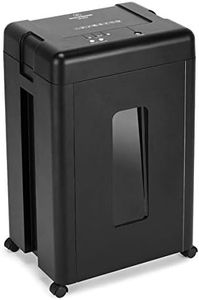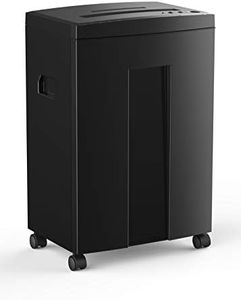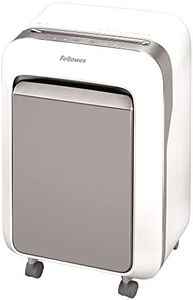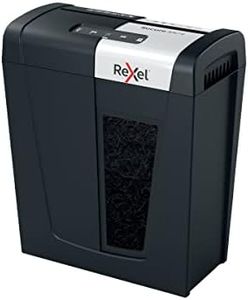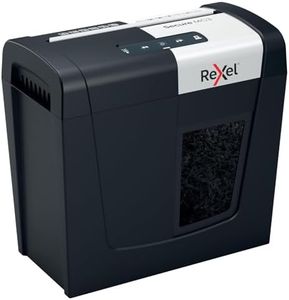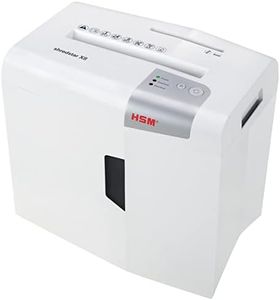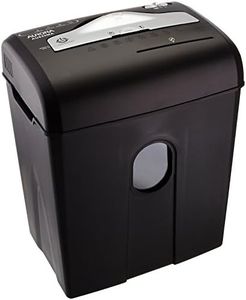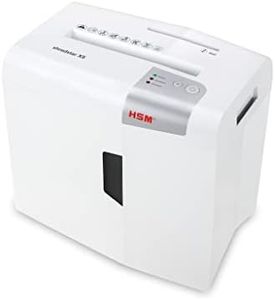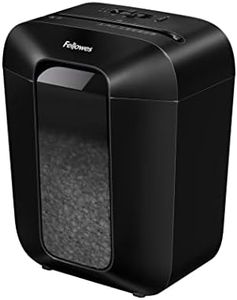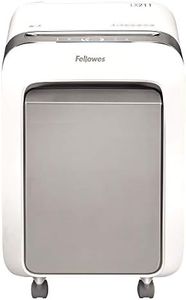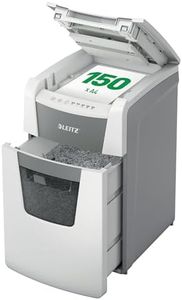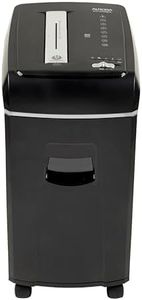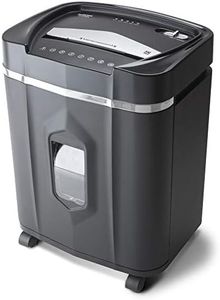We Use CookiesWe use cookies to enhance the security, performance,
functionality and for analytical and promotional activities. By continuing to browse this site you
are agreeing to our privacy policy
10 Best Micro Shredders
From leading brands and best sellers available on the web.Buying Guide for the Best Micro Shredders
When looking for the best micro-shredder, it's important to consider how you'll use it—whether for light personal documents or for confidential office papers. Micro-shredders cut paper into very small pieces, providing higher security than standard shredders. Understanding the basic specifications will help you match a shredder to your security needs, the volume of paper you plan to shred, and your desired convenience. Think about factors like the size of documents, the number of people using the shredder, and the frequency of use.Sheet CapacitySheet capacity tells you how many sheets of paper a shredder can handle at once. This is important because it affects how quickly you'll get through your shredding tasks and how convenient the usage will be. Typically, micro-shredders can handle anywhere from a few sheets to over a dozen sheets per pass. Lower sheet capacities (up to 5 sheets) are best for personal or occasional use, while higher capacities (10 or more) are better suited for small offices or if you have frequent shredding needs. Choose a capacity that matches how many papers you usually need to shred at one time and how often you use the machine.
Shred Size (Particle Size)The shred size refers to how small each piece of paper becomes after shredding, usually described in millimeters (such as 2mm x 12mm). Smaller particles mean more security because it's harder for anyone to put shredded documents back together. Micro-shredders create tiny pieces, much smaller than strip-cut or cross-cut shredders. If you're shredding highly confidential or sensitive information, look for the smallest possible shred size. For everyday use, a slightly larger micro-cut will still offer good security.
Run-Time and Cool-Down TimeRun-time indicates how long a shredder can operate before needing to rest and cool down. Most consumer shredders operate for a few minutes at a time before requiring a cool-down period to prevent overheating. Short run-times (2–5 minutes) are fine for occasional use, but if you have to shred larger volumes or frequently, look for a model with a longer continuous run-time (10 minutes or more). Match your choice to how much you'll be shredding in one sitting.
Bin CapacityBin capacity refers to how much shredded paper the machine can hold before you need to empty it. Measured in liters or gallons, a larger bin means you don't have to empty it as often. Small bins (under 5 liters) are suitable for light or occasional use, while larger bins (10 liters or more) are better for heavier use and shared environments. Consider how often you want to do the extra task of emptying the bin based on your shredding habits.
Paper Jam FeaturesPaper jams can be frustrating, so many micro-shredders come with features like auto-reverse or jam-proof systems that help prevent and clear jams. If you sometimes feed papers that are stapled, crumpled, or otherwise likely to cause problems, look for a shredder with helpful jam-removal features. For simple document shredding, basic jam protection is usually enough.
Noise LevelNoise level, measured in decibels, tells you how loud the shredder will be when in use. Lower noise shredders are ideal for quiet environments like home offices or small workplaces where noise might disturb others. If noise is a concern, look for models with quieter operation, usually specified at less than 60 decibels. If you don’t mind some noise, you have more flexibility in your choice.

